Duration: 10 Nights
Highlights: 11-day Exciting Jomolhari Trek is an epic journey that takes you to the majestic Mount Jomolhari, Bhutan's "Mountain of the Goddess." This trek is designed for the adventurous spirit, offering an unparalleled exploration of Bhutan's stunning landscapes, rich culture, and unspoiled wilderness.
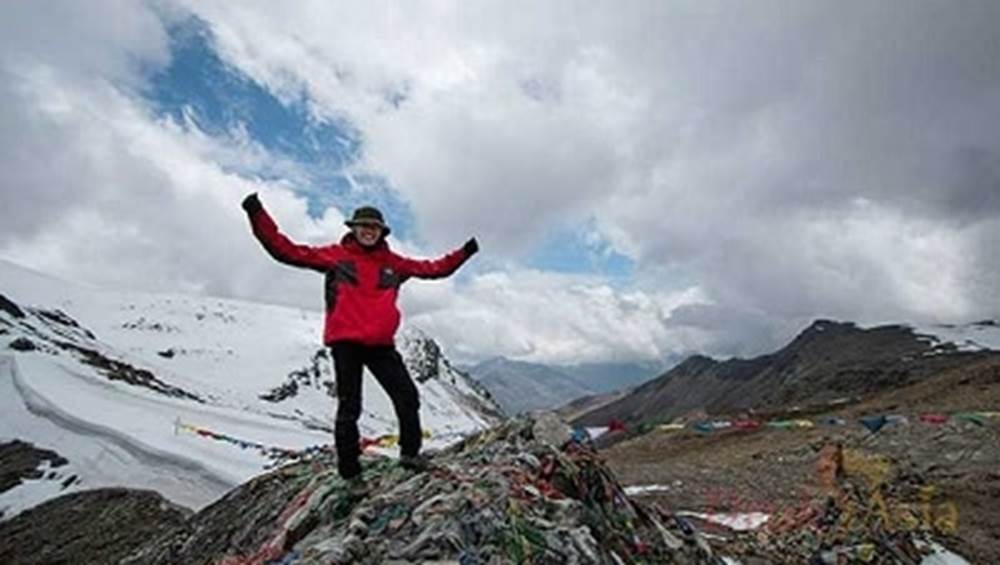
The view of Thimphu valley from the Buddha point is spectacular and beautiful,, especially at night.
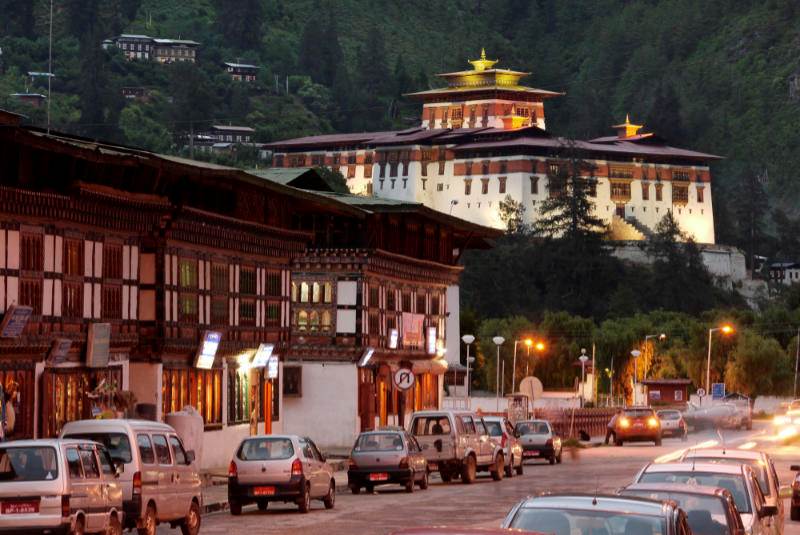
Tashichho Dzong, meaning “Fortress of the Glorious Religion,” is one of Bhutan’s most iconic landmarks. Located along the banks of the Wang Chhu River in Thimphu, it serves as the seat of Bhutan’s government and houses the Throne Room, the offices of His Majesty the King, and several key ministries. It’s also the summer residence of the central monastic body, led by the Je Khenpo. With its imposing whitewashed walls, golden spires, and ornately painted woodwork, Tashichho Dzong is a striking example of Bhutanese architecture. The surrounding gardens and courtyards offer a serene setting, especially when lit up in the evening. Visitors are welcome to explore certain areas of the dzong after office hours, making it not just a centre of political and religious life, but also a window into the living heritage of Bhutan.
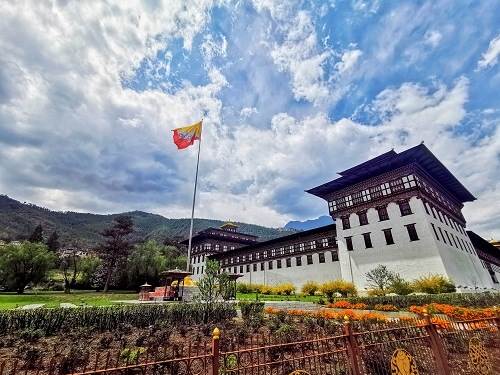
Strolling around Thimphu town offers a delightful blend of tradition and modern life in Bhutan’s capital. Start at Clock Tower Square, the lively heart of the city—adorned with carved wooden façades, prayer wheels, and water fountains—and a charming spot to linger while locals chat or browse the weekend market. From here, wander down Norzin Lam, Thimphu’s main street, where boutique shops, handicraft stores, and cafés invite you in. Along the way, admire traditional architecture—ornate wood carvings, colourful murals, and fluttering prayer flags—woven seamlessly into everyday life.
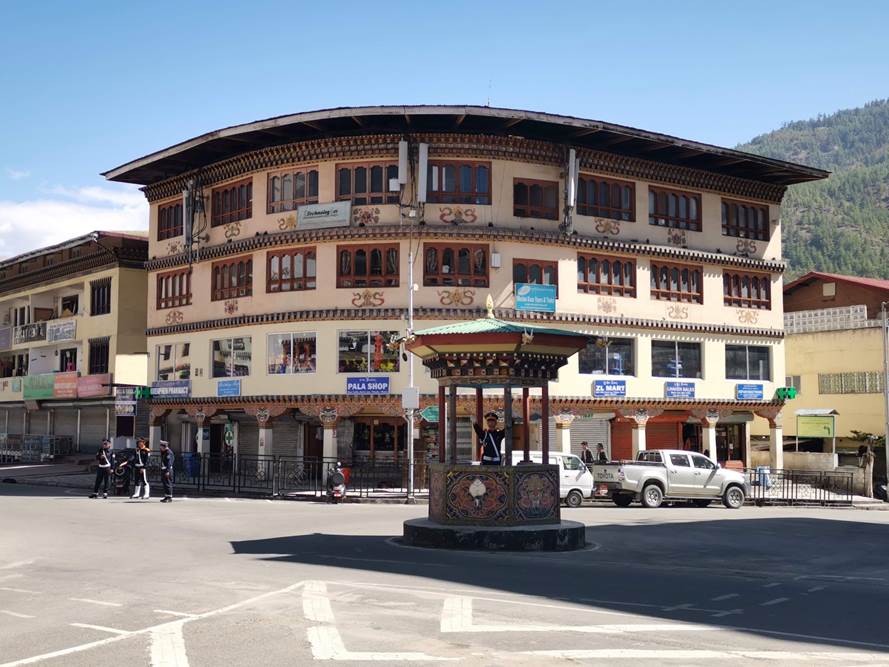
Tashichho Dzong, often called the “Fortress of the Glorious Religion,” is one of Thimphu’s most iconic landmarks—and a must-visit for anyone wanting to understand the soul of Bhutan. First built in 1641 and later restored by the visionary Third King, Jigme Dorji Wangchuck, this grand fortress sits majestically along the banks of the Wang Chhu River. By day, it functions as the seat of Bhutan’s government and religious affairs, housing key ministries, His Majesty’s office, and the central monastic body. By evening, it transforms into a serene and majestic sight, its golden roofs glowing against the backdrop of the setting sun. You can stroll through its beautifully maintained courtyards, admire traditional Bhutanese architecture, and get a rare glimpse into the harmonious blend of spiritual and administrative life.
-656.jpg)
Thimphu Tshechu is Bhutan’s largest and most festive Tshechu, held over three days in the courtyard of Tashichho Dzong each autumn (typically late September or early October) to honour Guru Rinpoche, the 8th‑century saint who introduced Tantric Buddhism to the Himalayas. The air buzzes with anticipation as local families gather in their colourful ghos and kiras, creating a vibrant, community spirit. The heart of the festival lies in the Cham dances—dramatic, masked performances by monks and lay dancers depicting legends of Guru Rinpoche, protective deities, and moral tales like the Dance of the Lords of the Cremation Grounds and Guru Tshengye (Eight Manifestations). The grand finale is the unfurling of a giant thangka scroll (thongdrel) on the final morning, offering spiritual merit to anyone fortunate enough to see it before sunrise.
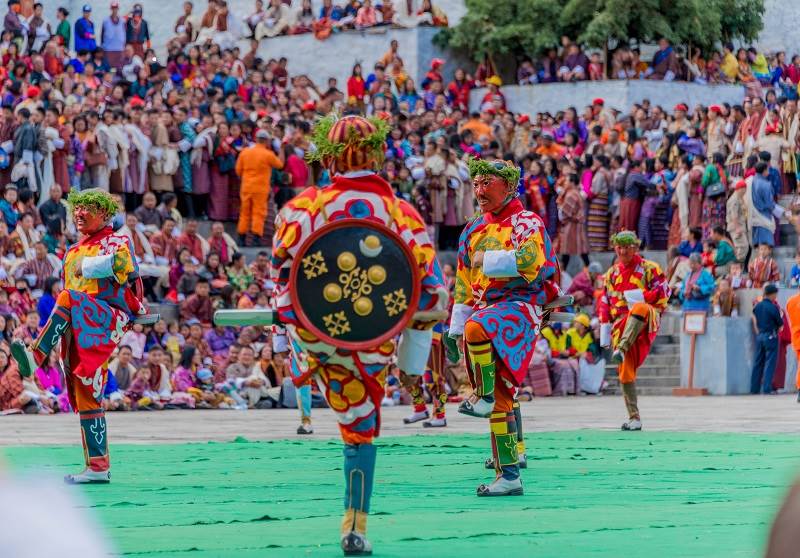
Towering above Thimphu Valley from the tranquil Kuenselphodrang Nature Park, the majestic Buddha Dordenma is a sight to behold. Standing at a staggering 51.5 metres, this golden statue is one of the largest seated Buddhas in the world—and it’s not just its size that impresses. Nestled inside are over 100,000 smaller Buddha statues, each crafted with the same devotion and detail. More than a monument, the Buddha Dordenma is a symbol of indestructibility and spiritual awakening, believed to bless the land with peace and harmony.
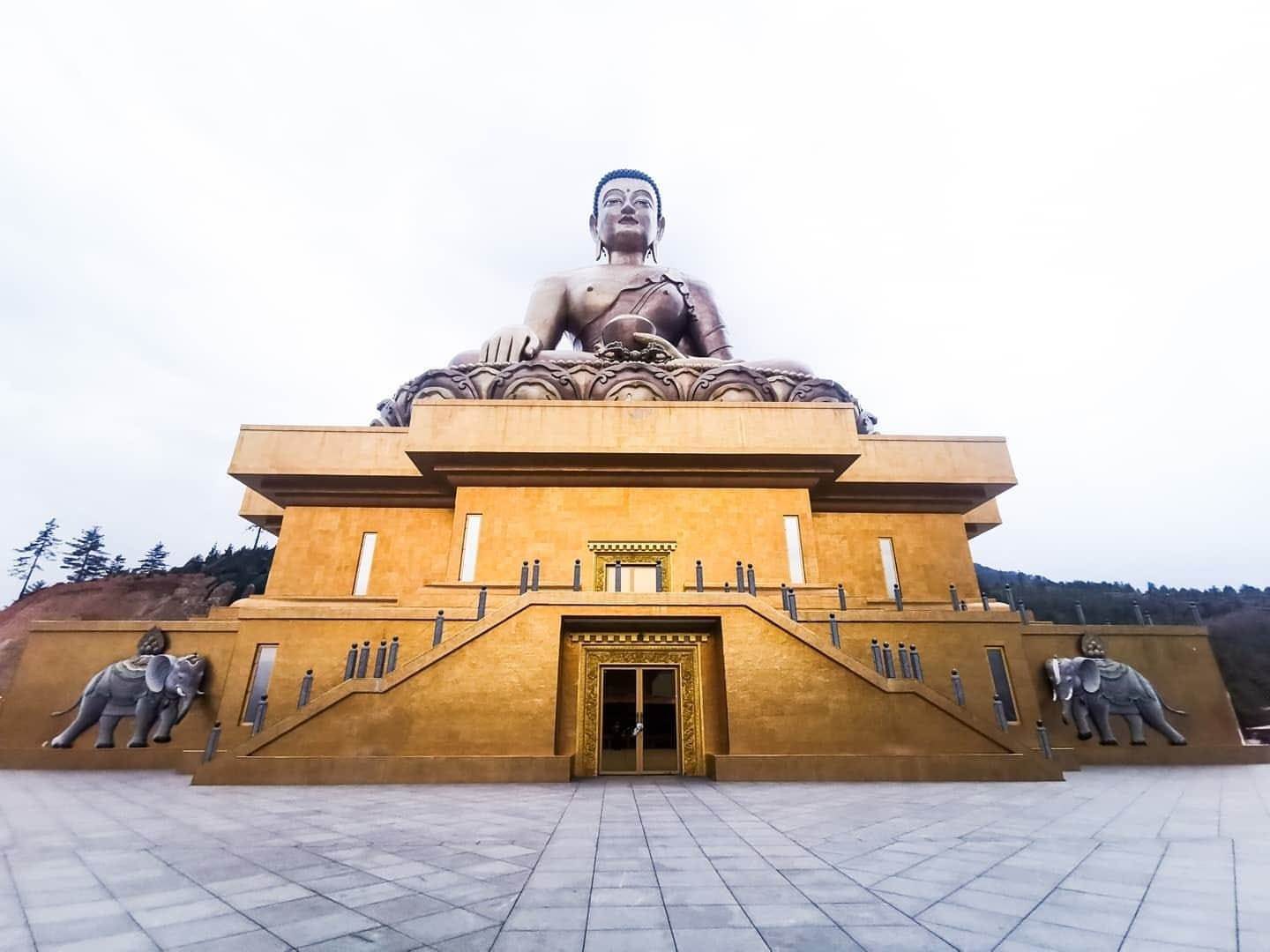
Immerse yourself in the spiritual rhythm of Thimphu with a visit to the National Memorial Chorten, where locals—especially the elderly—gather daily to walk in prayerful circles, spinning prayer wheels and murmuring mantras in a peaceful flow of devotion. Built in 1974 to honour the beloved Third King, this white-washed stupa is a living sanctuary. Step inside and you’ll find vibrant murals, intricate mandalas, and detailed sculptures that beautifully illustrate Buddhist teachings. If you're seeking serenity or a glimpse into Bhutanese spiritual life, this is a place that quietly leaves a lasting impression.
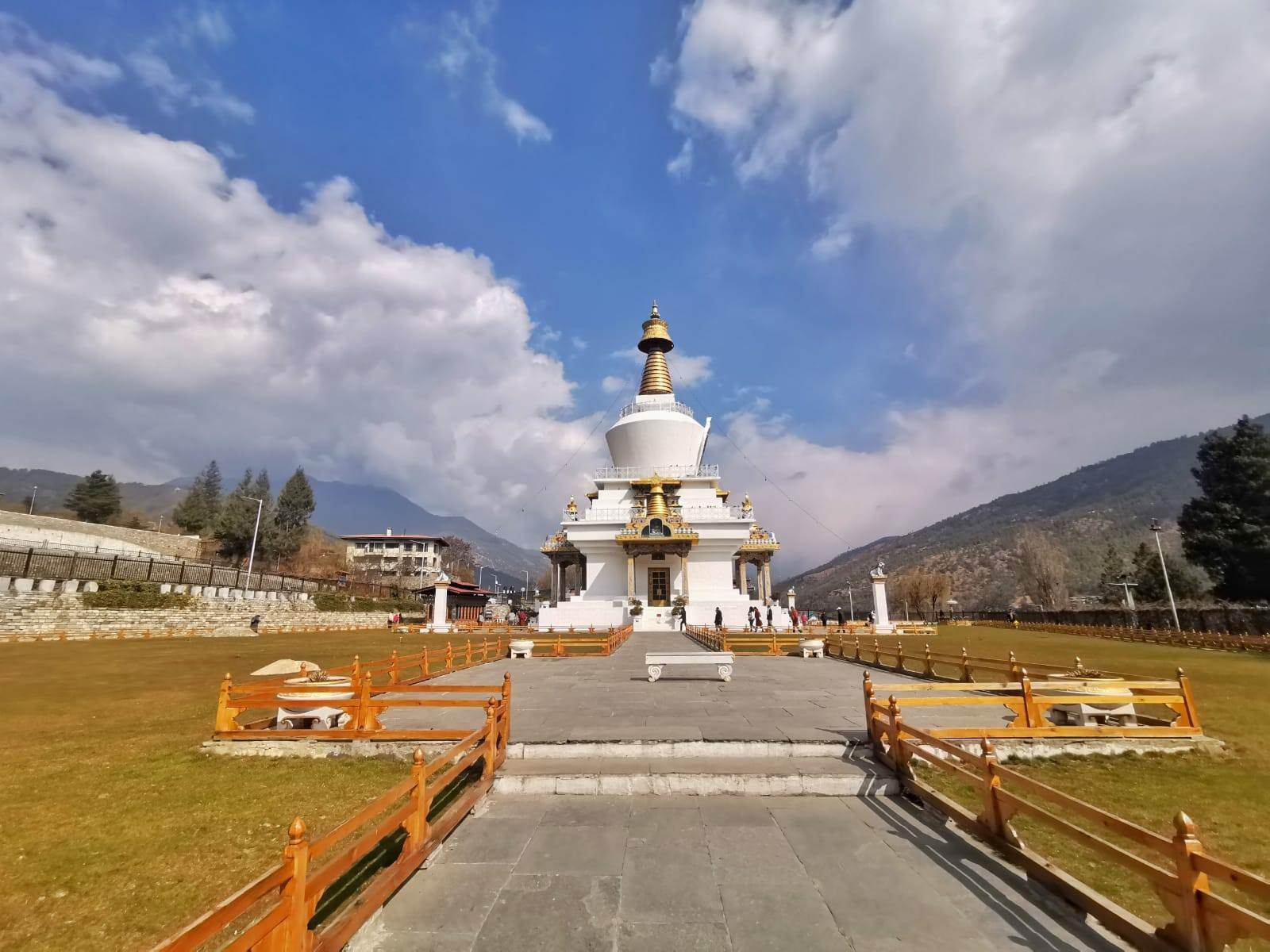
Paro Town is a charming and picturesque valley town nestled along the Paro River, surrounded by forested hills and traditional Bhutanese architecture. As the gateway to Bhutan—home to the country’s only international airport—Paro offers a relaxed blend of culture, history, and local life. The town is dotted with whitewashed shops, cosy cafés, handicraft boutiques, and traditional wooden buildings, all set against a stunning Himalayan backdrop. It's a good place to shop for souvenirs and mementos.
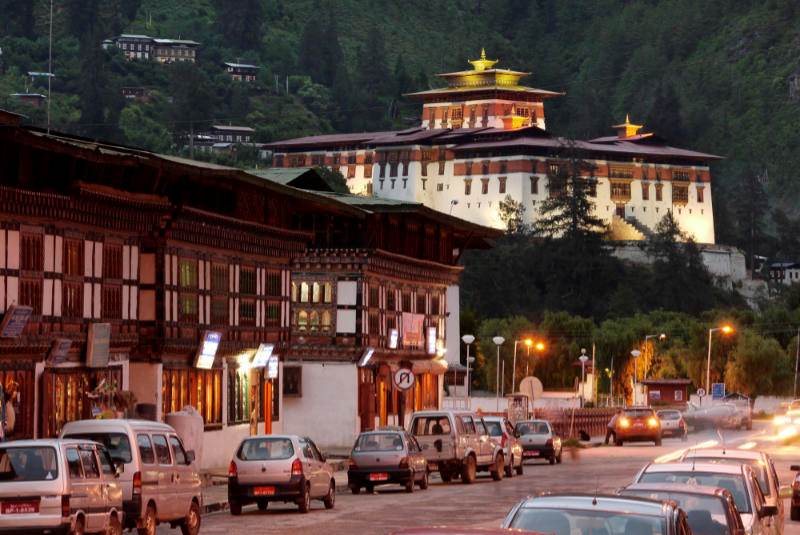
Paro Valley is one of Bhutan’s most breathtaking regions, offering a stunning blend of natural beauty, cultural depth, and spiritual heritage. The beautiful valley is home to many of Bhutan's oldest monasteries and temples. At the northern end of the valley towers Mount Jomolhari, rising to 7,300 metres, whose glacier-fed waters form the Pachu River that flows serenely through the valley. Surrounded by pine forests, terraced fields, and traditional farmhouses, Paro Valley captures the timeless charm of Bhutan, making it an unforgettable destination for nature lovers and culture seekers alike.
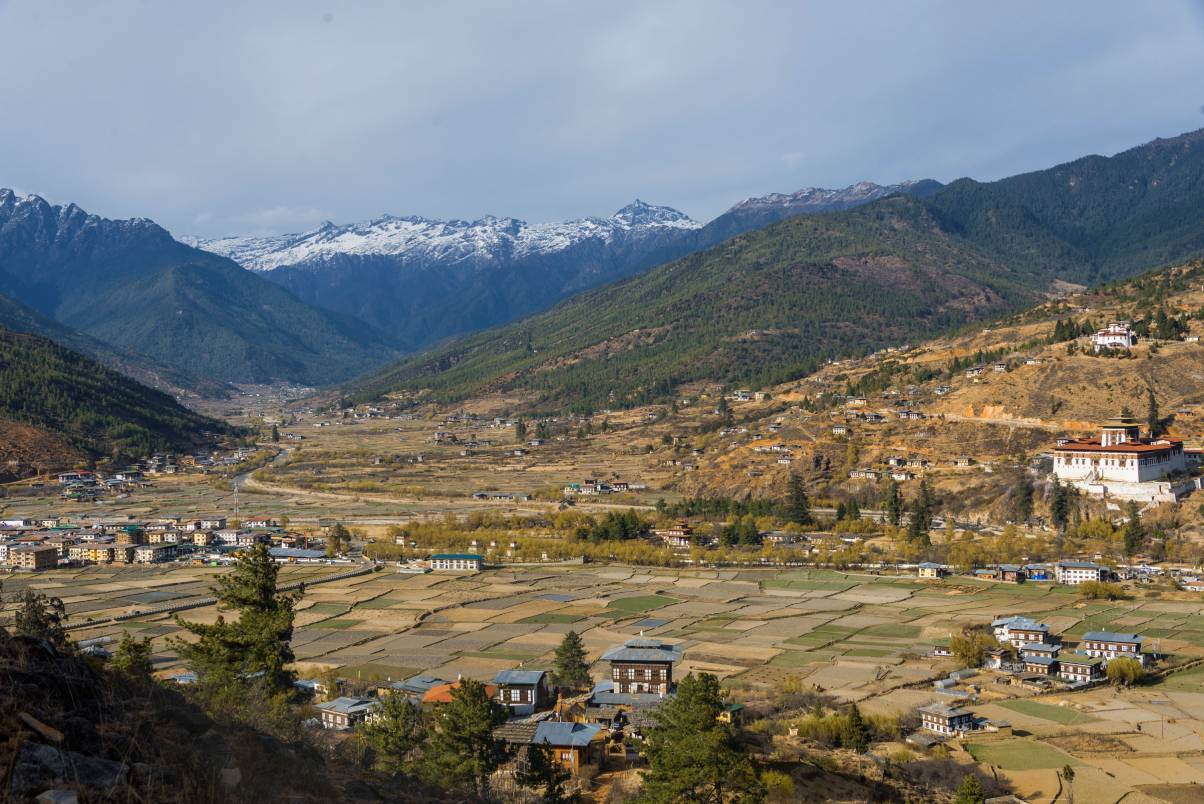
At 1300 years old, Kyichu Lhakhang is one of Bhutan’s oldest and most sacred temples, believed to have been built in the 7th century by Tibetan Emperor Songtsen Gampo as part of a spiritual mission to subdue a demoness and spread Buddhism. Located just north of Paro, it is often referred to as the “Sacred Jewel of Bhutan.” Over the centuries, the temple has been expanded and visited by many great masters, including Padmasambhava. It's a peaceful and deeply spiritual place, cherished by pilgrims and visitors alike.

Paro Dzong—also known as Rinpung Dzong, or the “Fortress of a Heap of Jewels”—is a spectacular hilltop monastery-fortress overlooking the Paro River and valley. Built in 1646 on an earlier temple site, it remains one of the finest examples of Bhutanese architecture, with soaring wooden beams, an iconic cantilever bridge and numerous shrines and chapels inside. It has served both as a defensive stronghold against Tibetan invasions and as the administrative and monastic centre for Paro district. Today it’s still home to around 200 monks, hosts the colourful Paro Tsechu festival, and offers visitors a serene yet awe-inspiring glimpse into Bhutan’s spiritual and cultural heritage.
-961.jpg)
[Distance 22 km, duration 6-8 hours depending on the condition of the trail, 770 m ascent, 10 m descent, camp altitude 3,610 m] The trail follows the river through a heavily forested area with a few isolated farmhouses. As we go up the valley becomes narrow, wilder and steeper. The trail winds up and down along the drainage. We pass a junction en route, where another path leads over the Tremo La to Tibet. Bhutanese people formerly used this route as a trading route to Tibet. We cross several traditional wooden bridges before finally arriving Thanthangka. Camp is in a meadow with a stone shelter. From this, we can see Mount Jomolhari for the first time if the weather permit.
If you did not see Mount Jhomolhari last evening, you would have a great chance to get a great view this early morning. This morning, the trek continues up the Pachu valley that widens into patches of alpine meadow and meager growths of a forest. Cross an army outpost along the way and enjoy a spectacular view of high mountain ridges and snow-capped peaks. Yaks and yak herder’s homes become a regular feature of the landscape. Passing the villages Soe, Takethang and Jangothang is another asset on this day. Reaching Jangothang, one of the most beautiful campsites of the Himalayas, you will again have a spectacular view of Mount Jhomolhari. [Overnight Camp – Jangothang 4,090 m]
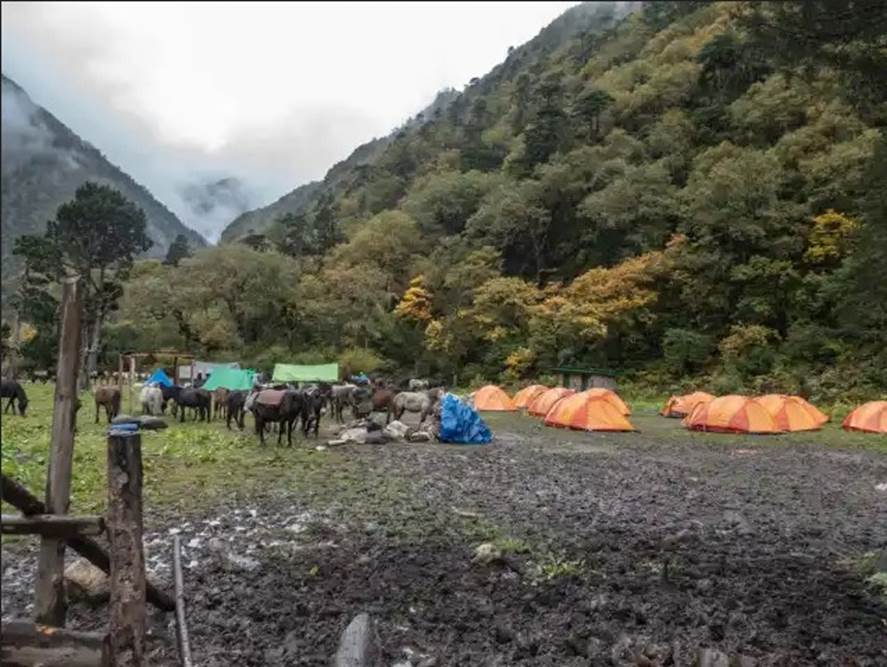
The rest day in Jangothang provides plenty of possibilities for day hikes with great views of lakes and snow-capped mountains such as Jomolhari and Jichu Drake. There are good chances to spot some blue sheep on the upper slopes of the valley. Jangothang is a perfect environment for your acclimatization. You can also trek up to Tosoh or hike around the area. There are good short hiking trails in three directions. Jomolhari and its subsidiary mountain chains lie directly west, Jichu Drake to the north, and there are some unclimbed peaks to the east.
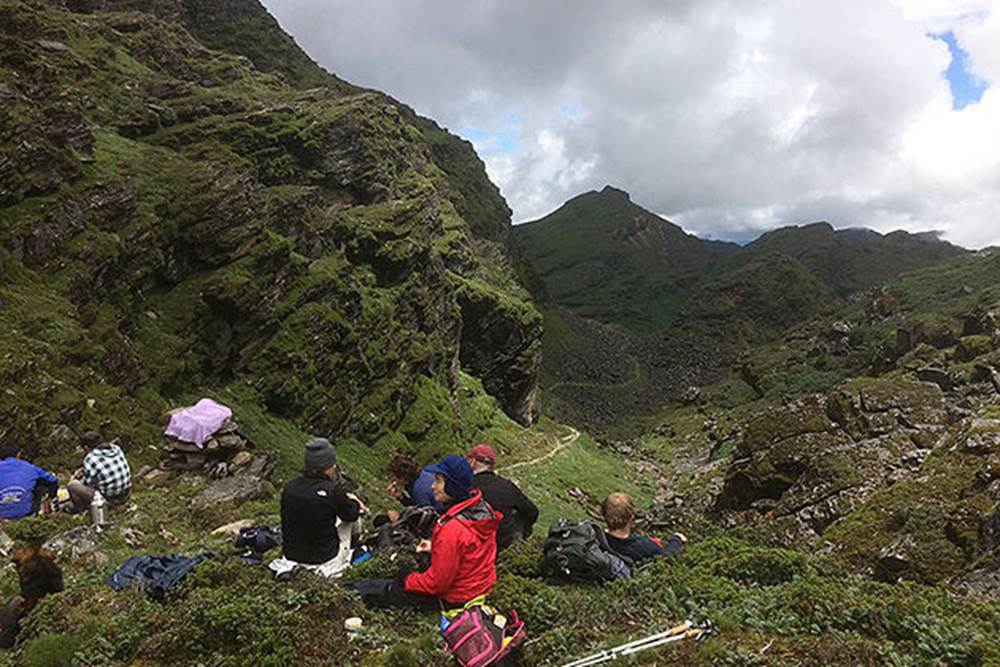
[Distance 16 km, six to seven hours, 810m ascent, 1,090 m descent, camp altitude 3,800 m] The trail leads to a last settlement in the valley and drops to the Paro Chhu. Passing the lake of Tshophu (4,380 m) you will climb steeply to Bhonte La pass at 4,890 m, the highest point of this trek route. Reaching the Dhumzo Chhu river, you trek downstream passing the few houses of Soi Yaktsa (Dhumzo) to arrive at your camp soon after.
-13.jpg)
[Distance 11 km, duration 4-5 hours, 720 m ascent, 340 m descent, camp altitude 4,180 m] The trail climbs 100 m over a ridge to drop to another stream then. After crossing the Takhung La pass (4,520 m) you descent to Thombu Shong, three yak herder huts with your campsite next to them.
-660.jpg)
[Distance 13 km, duration 4-5 hours, 200 m ascent, 1,650 m descent, camp altitude 2,850 m] Crossing Thombu La pass (4,380 m) you will finally reach Gunitsawa where you can be collected. Then we will drive to Paro for the night
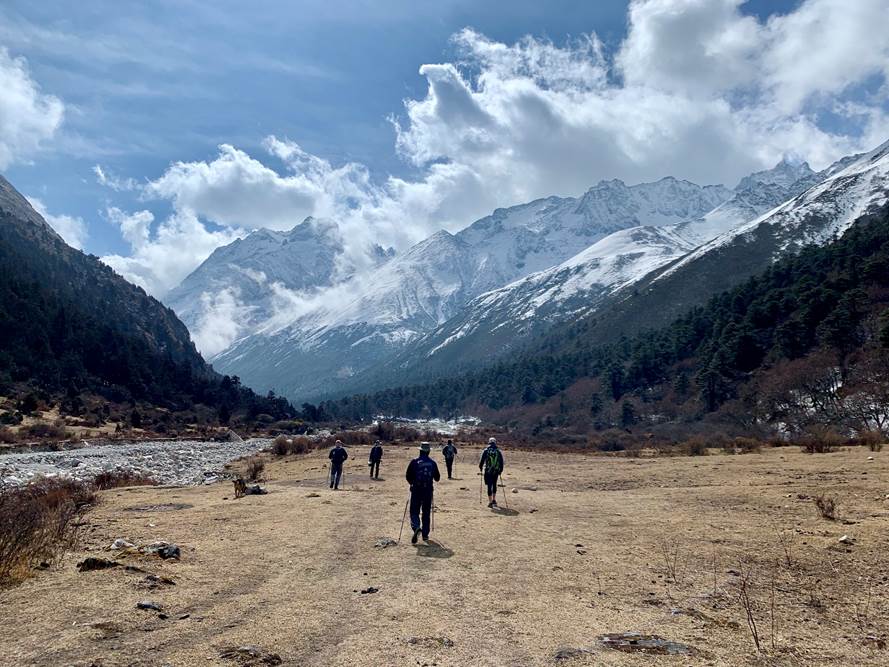
They say, "a visit to Bhutan is not complete without climbing up to the Tiger's Nest". Taktsang Monastery, famously known as the Tiger’s Nest, is Bhutan’s most iconic landmark, dramatically perched on a cliffside 3,120 metres above sea level in Paro Valley. According to legend, Guru Padmasambhava flew to this site in the 8th century on the back of a tigress and meditated in a cave that now lies at the heart of the monastery. Built in 1692, the complex includes temples, meditation caves, and stunning viewpoints that seem to defy gravity. Reaching the monastery involves a scenic 2–3 hour hike through pine forests and fluttering prayer flags—a spiritual and physical journey that rewards you with breathtaking views and deep serenity.
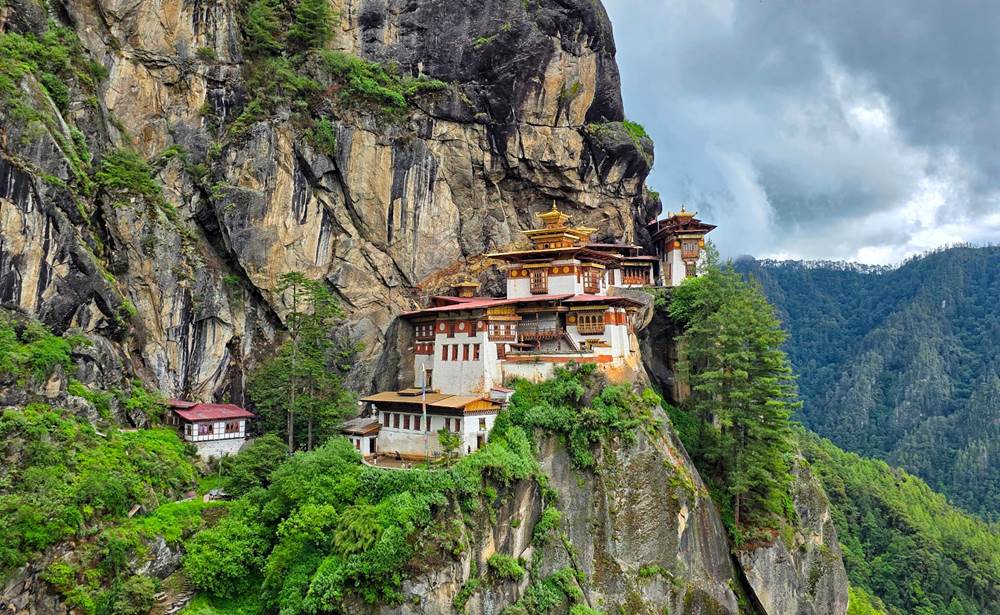
Sink into the comforting warmth of a traditional Bhutanese hot stone bath—an age-old ritual where nature, healing, and heritage come together in perfect harmony. As fire-roasted river stones are carefully dropped into a wooden tub filled with mineral-rich water, they crackle and hiss, releasing therapeutic heat and minerals believed to soothe tired muscles and boost circulation. Infused with fresh mountain herbs known for their calming aromas and medicinal properties, the bath envelops you in a cocoon of peace and restoration. In the quiet embrace of a rustic bathhouse, you’ll feel stress melt away, leaving only stillness and serenity behind. Additional charges apply.
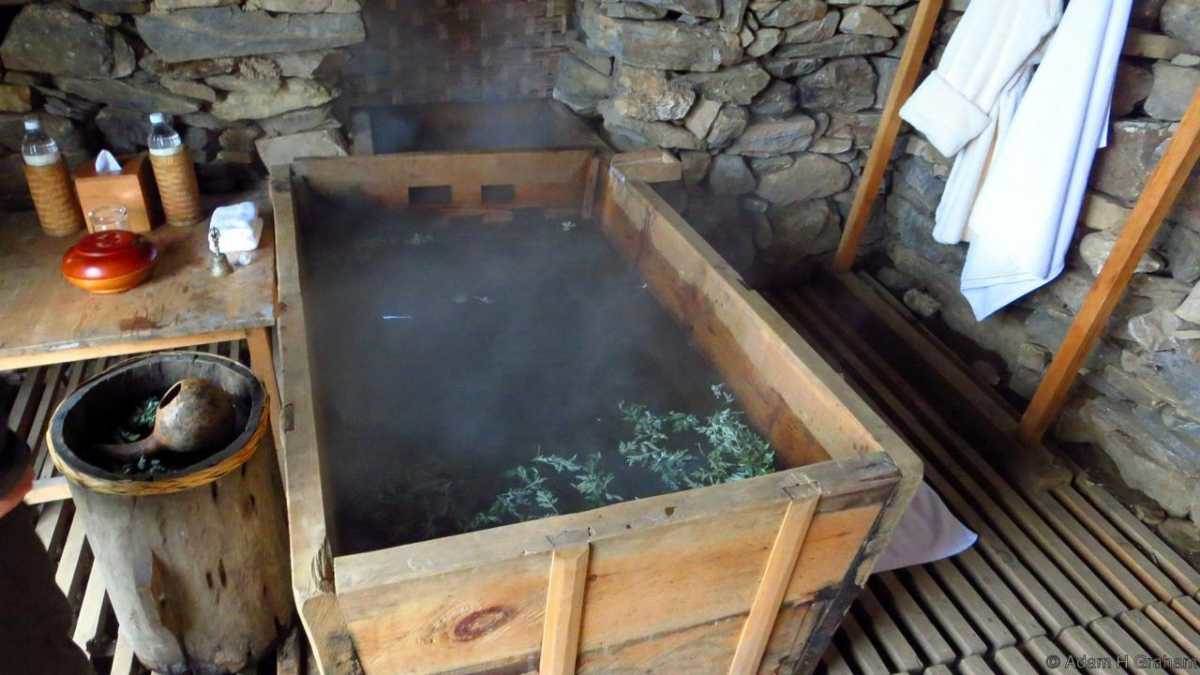
Travel Tips
Druk Asia
Bhutan Office
Singapore Sales Office
Kuala Lumpur Office
Copyright © 2024 Druk Asia - All Right Reserved
Travel Tips
Druk Asia
Bhutan Office
Singapore Sales Office
Kuala Lumpur Office
Copyright © 2024 Druk Asia - All Right Reserved
